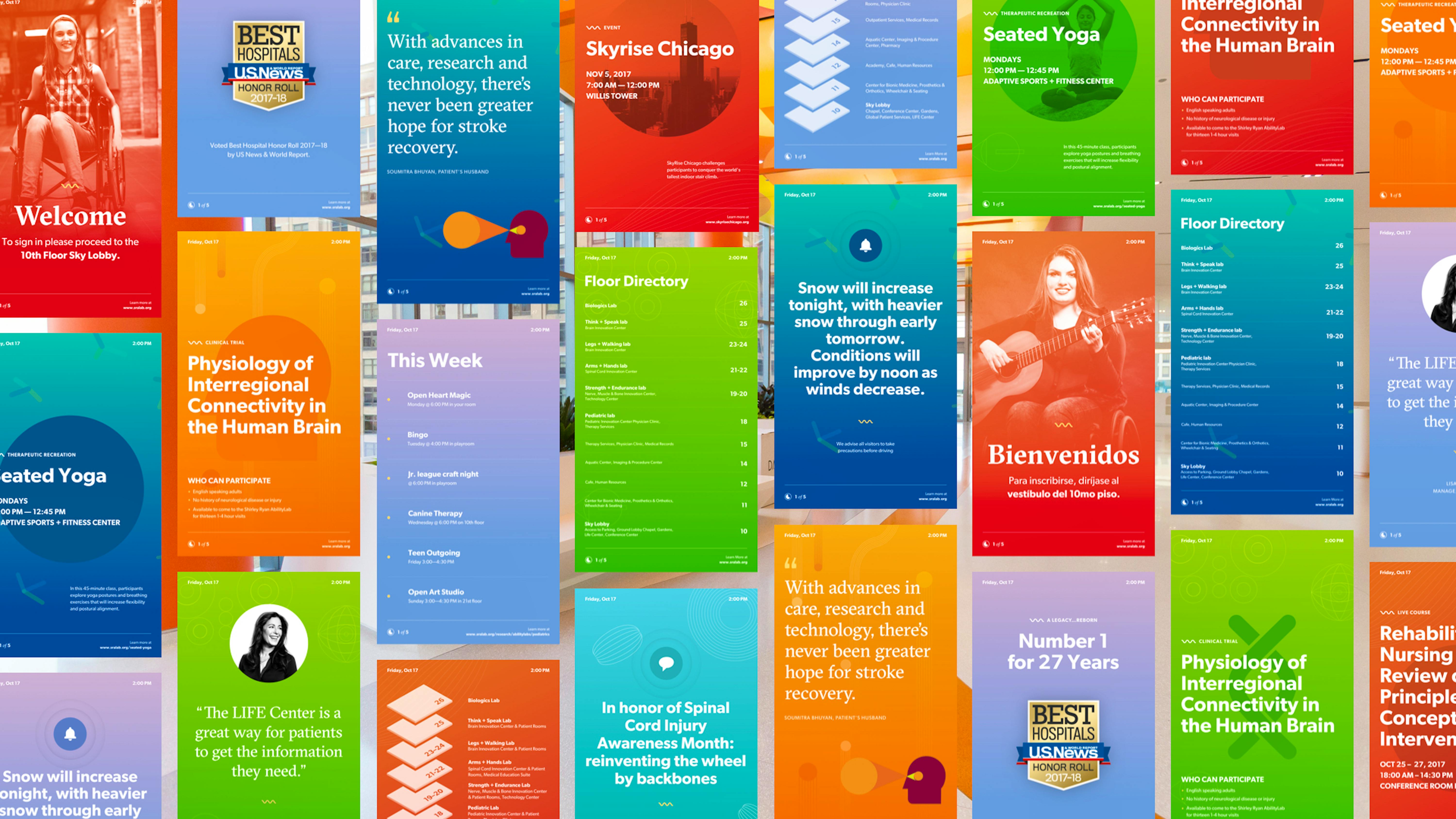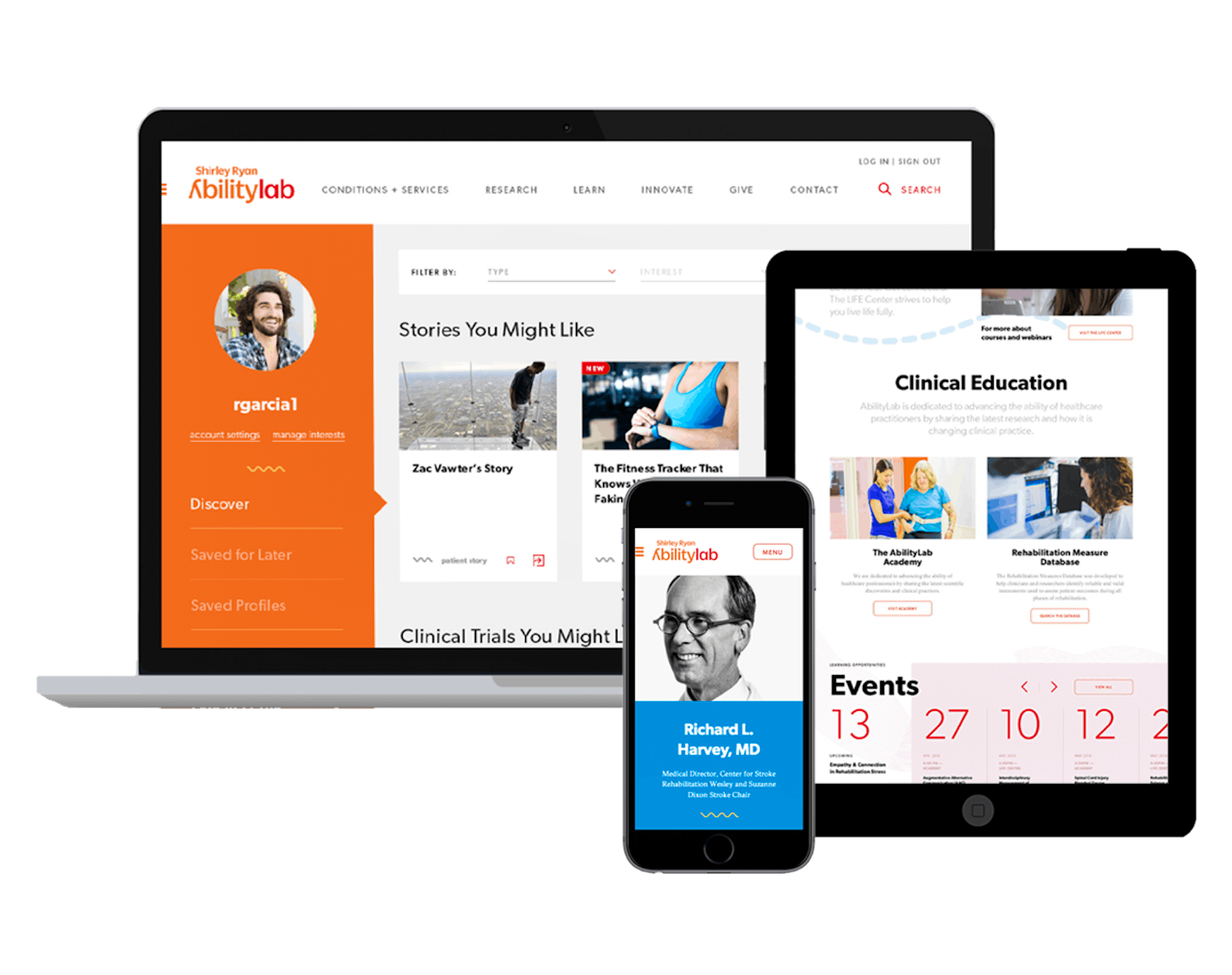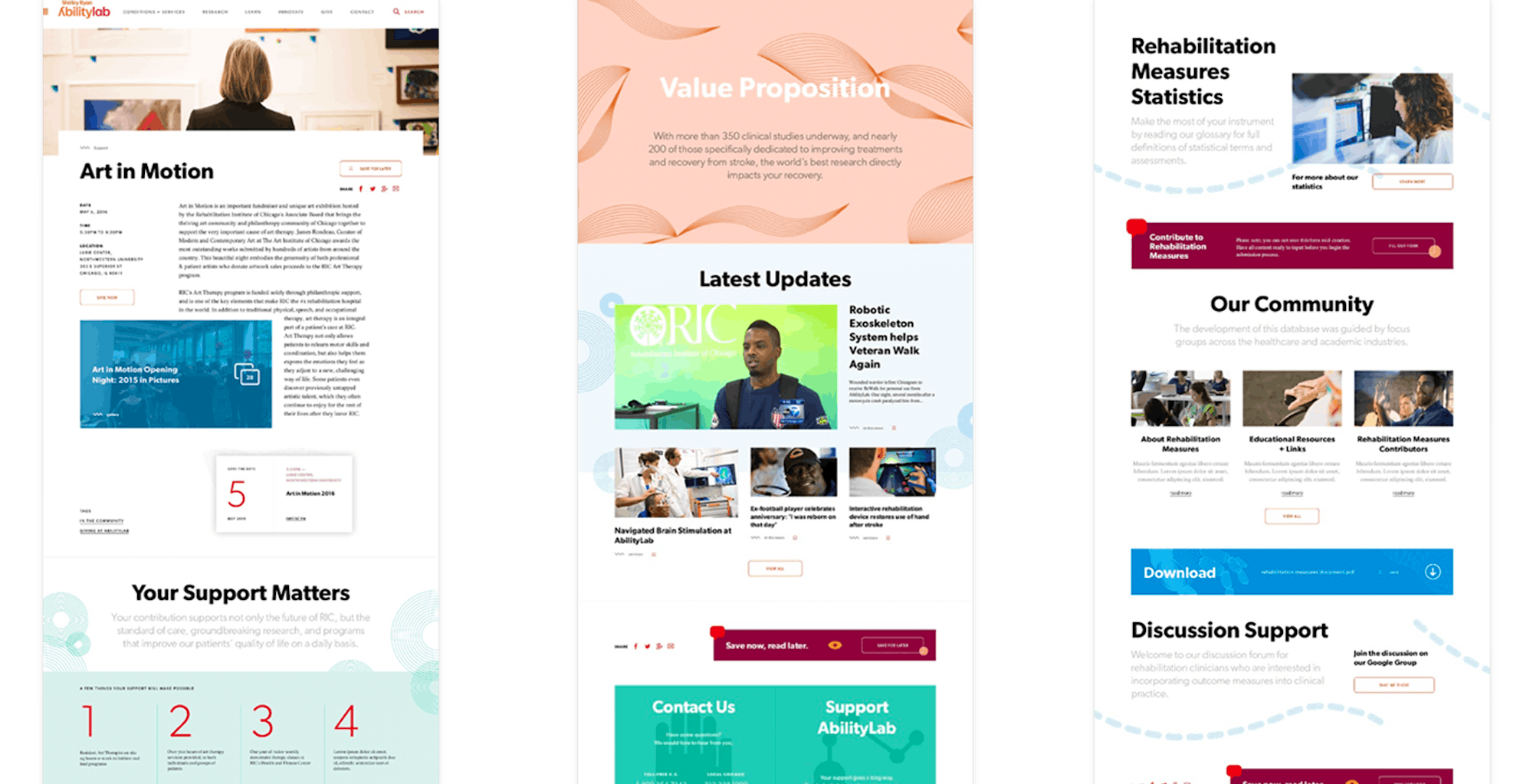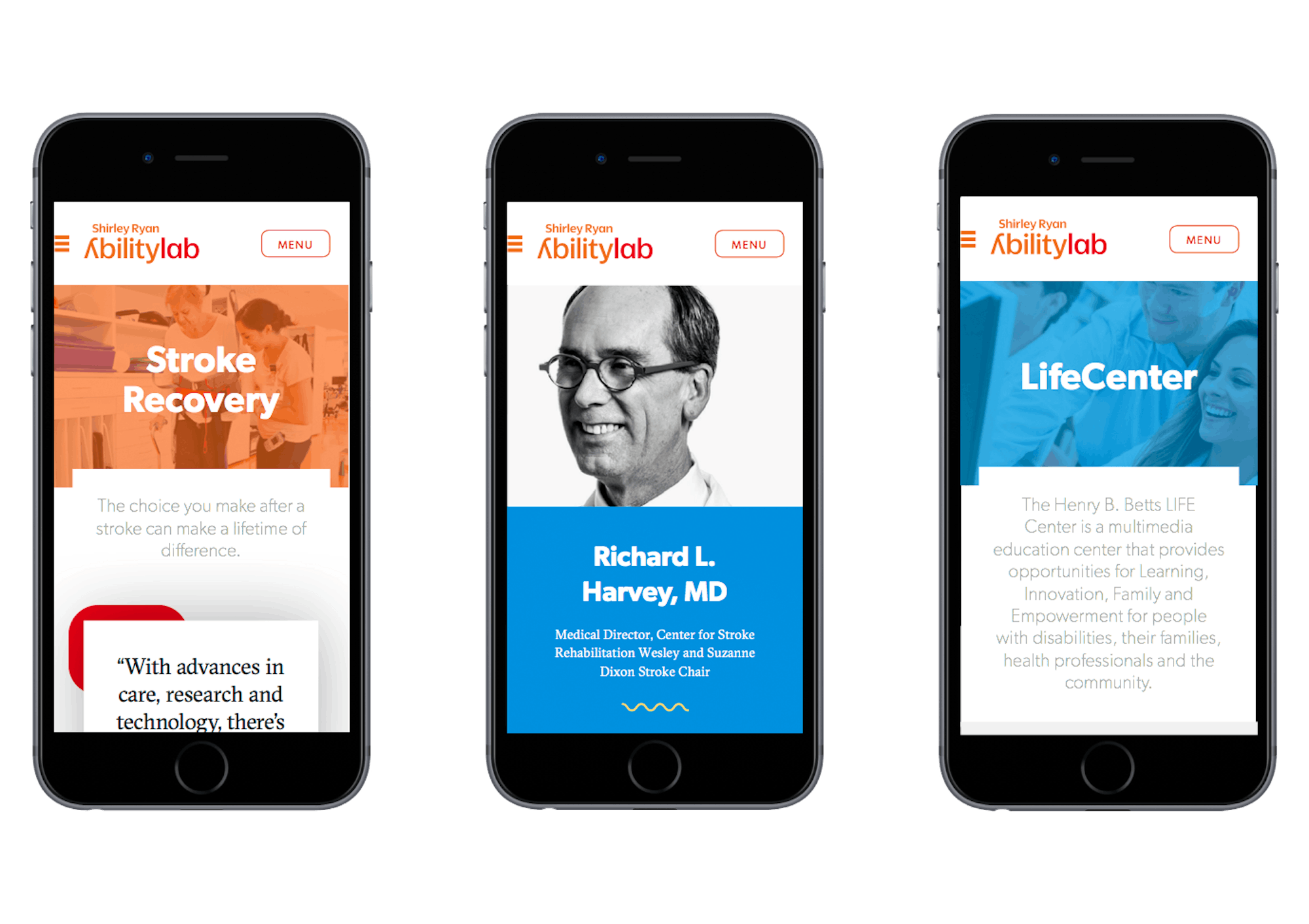
A Groundbreaking Digital Platform Redefining the Medical Field
With the opening of a new state-of-the-art facility, the Rehabilitation Institute of Chicago was about to reinvent their medical and scientific practices and wanted to reflect that change through a rebranding project and a website that matched their level of innovation. Organizationally, the different websites for the hospital and its many connected businesses were to be collapsed into one centralized hub. Everything, from a library of patient educational resources to a catalog of scientific research projects, would need to find a new digital home.
Code and Theory partnered with Shirley Ryan AbilityLab to help with the digital transition. Over the course of an 18 month strategy, design and development timeline, we created a feature-rich responsive design system that was gold standard accessibility compliant.

1
The Background
The Shirley Ryan AbilityLab, formerly the Rehabilitation Institute of Chicago (RIC), #1 Rehabilitation Hospital in the U.S. since 1991, is one of the most innovative care facilities in the world and is the global source of science-driven breakthroughs in Human Ability. It is the first-ever “translational” research hospital where clinicians, scientists, innovators, technologists and patients work together in the same space 24/7, discovering new approaches and applying research in real time.
With their groundbreaking, agile approach to rehabilitation medicine, Shirley Ryan AbilityLab is changing the concepts, expectations, and the very vernacular of treatment. They began with a physical facility that could properly accommodate and facilitate this new approach to recovery, and they wanted to work with a digital agency that was as intent on meeting users’ needs as they were in meeting patients’ needs.
2
The Challenge
A Fragmented Ecosystem
Their digital ecosystem was highly fragmented, representing a diverse series of sites, each with different audiences, stakeholders, needs, levels of HIPAA compliance, and political/operational intricacies involving universities and even the federal government. The complexity of these sites involved over 10,000 pages, 15 types of content, and 30 categories, each with taxonomies of over 500 attributions spanning more than 10 websites.
We were challenged to reimagine this ecosystem under one platform and breathe life into the new Shirley Ryan AbilityLab brand, all while ensuring that our design integrated with the physical hospital (CX=UX) and was flexible enough to execute ongoing content strategies for the site in the future.
Answering to a Diverse Audience
An even greater challenge was the diversity of the audiences this unified platform needed to address. From patients to government to the international community, each had a different level of literacy and understanding of the subject matter. We needed to make sure each segment felt spoken to and spoken for while maintaining the integrity of their needs. The site needed to be relevant to patients and their families at every stage of their personal journey, providing relevant content at the right moments. It needed to grow with the patient’s own understanding and needs during their recovery.
Personalization was the optimal way of addressing the needs of so many audiences, and the medical organization challenged Code and Theory to approach personalization in an innovative way, doing what was right for the different user groups. Driving personalization would be difficult with this number of audience groups—it would have to be user-generated, making for a non-passive approach to personalization.

3
Experience Insight
Synthesizing Many Resources Into One Dashboard
A large part of patient care at Shirley Ryan AbilityLab, beyond the best-in-class facilities and experienced and skilled clinical team, is the diverse array of resources available during care. Patients can join clinical trials, connect with support groups and receive advice on how to find a job that will suit them, among other things.
Our response was to create a user dashboard where patients could save the various educational resources, doctor profiles, stories, clinical trials, etc., accessible anywhere from any device.
Patients now have access to a digital binder that allows them to save content that can aid in their recovery.
4
The Solution

Giving a Face to Patient Care
Prior to the redesign, only some of the doctors on staff had public profiles. Yet many patients remarked how they developed close relationships with their therapists and research teams, highlighting their importance in the patients’ recovery.
Our response: Create a profile for all medical and research staff that allows patients to follow their medical team and access them from their dashboard.
Profiles for doctors, therapists, and researchers reaffirm the human touch patients can expect in their treatment.
A Confluence of Many
The new website represents what was originally 10 disparate websites joined into one. Despite each website needing to serve approximately six distinct audience types with massively disparate levels of education/subject matter expertise, the new site seamlessly joins them together to accommodate different audiences.
Various stakeholders can now get the information they need all in one place, from physical therapists searching for new resources in patient treatment to PhD students researching career opportunities to discharge planners looking for where to refer a patient.
The Shirley Ryan AbilityLab site replaces multiple websites to serve as a centralized and coherent experience for various stakeholders.
5
The Conclusion
Maximizing Patient Recovery
The website now complements the physical experience of the new hospital, aiding in the goal of maximizing patient recovery. Every feature built into the new digital experience is in the name of not just facilitating patient care but expediting recovery.
The spring 2017 opening of the new hospital was officially coupled with the perfect digital companion.





